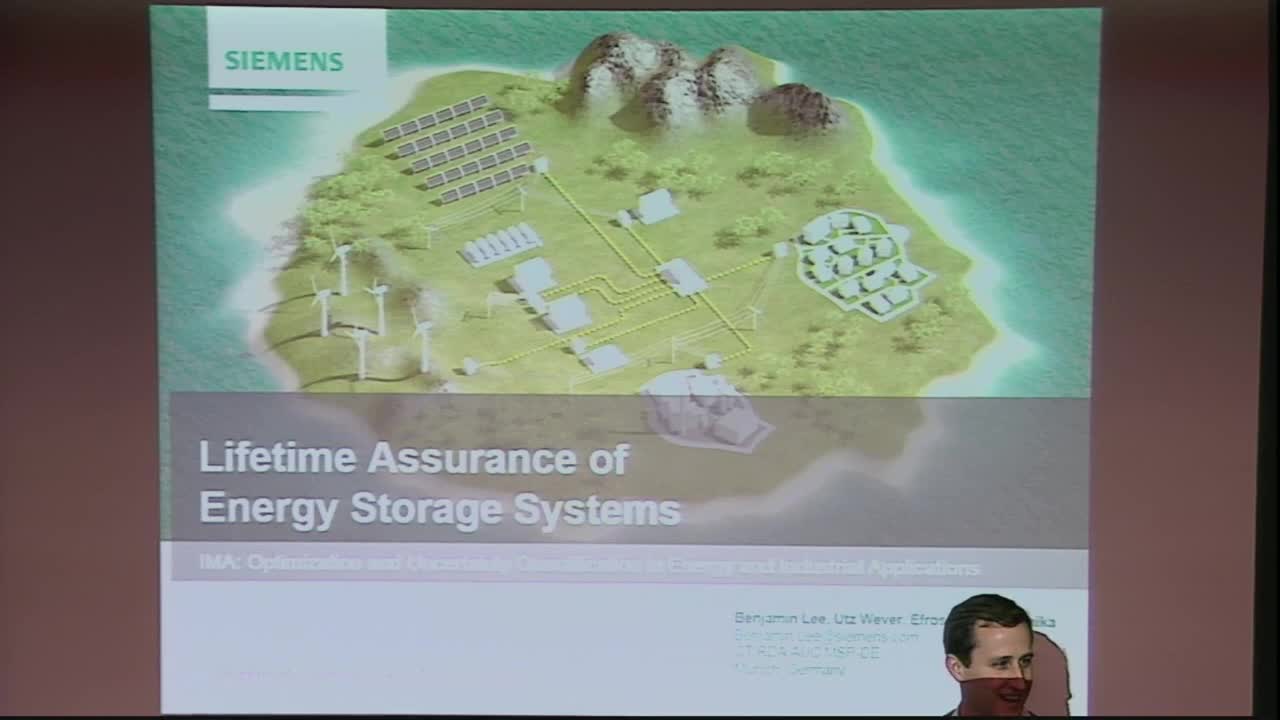Lifetime Assurance of Lead-Acid Energy Storage Systems
Presenter
February 23, 2016
Keywords:
- energy storage systems, predictive maintenance, life expectancy, uncertainty quantification
MSC:
- 74G65
Abstract
Lead-acid batteries are capable of providing large amounts of power for short durations. Unlike Lithium-Ion batteries, they age well when stored at (near) full capacity, and are relatively inexpensive in terms of storage capacity. However, the number of cycles a lead-acid battery can endure before end of life is significantly lower than that of lithium-ion batteries, meaning that they tend to be useful for applications such as an Uninterruptable Power Supply (UPS), which rely upon the batteries to provide power (up to several hours) when a grid disturbance occurs, or to “level out” minute fluctuations in the power provided by the grid for critical applications.
It is important that of energy-storage system integrators are able to assure performance, as system failures can cause significant financial damages to the customer. To provide assurance that the system will continue to function into the future (or to identify maintenance intervals) the remaining serviceable lifetime of the system must be determined. In making such a prediction, the system integrator must take the following into account:
• The lifetimes of lead-acid batteries under controlled laboratory conditions are well modeled by cycle-endurance curves that describe the life expectancy for an individual cell under specific loading conditions. The curves model the 50th percentile life expectancy, such that the actual life for any individual cell remains uncertain.
• Because the model only captures lifetime under laboratory conditions, premature failure events may occur at uncertain times.
• The past states of the aggregate energy-storage system are known, but the states of individual cells in the system cannot be precisely measured, meaning that the previous loading conditions for each individual cell are uncertain.
• The past energy demand on the system is known, but future demand cannot be precisely predicted, and is therefore uncertain.
